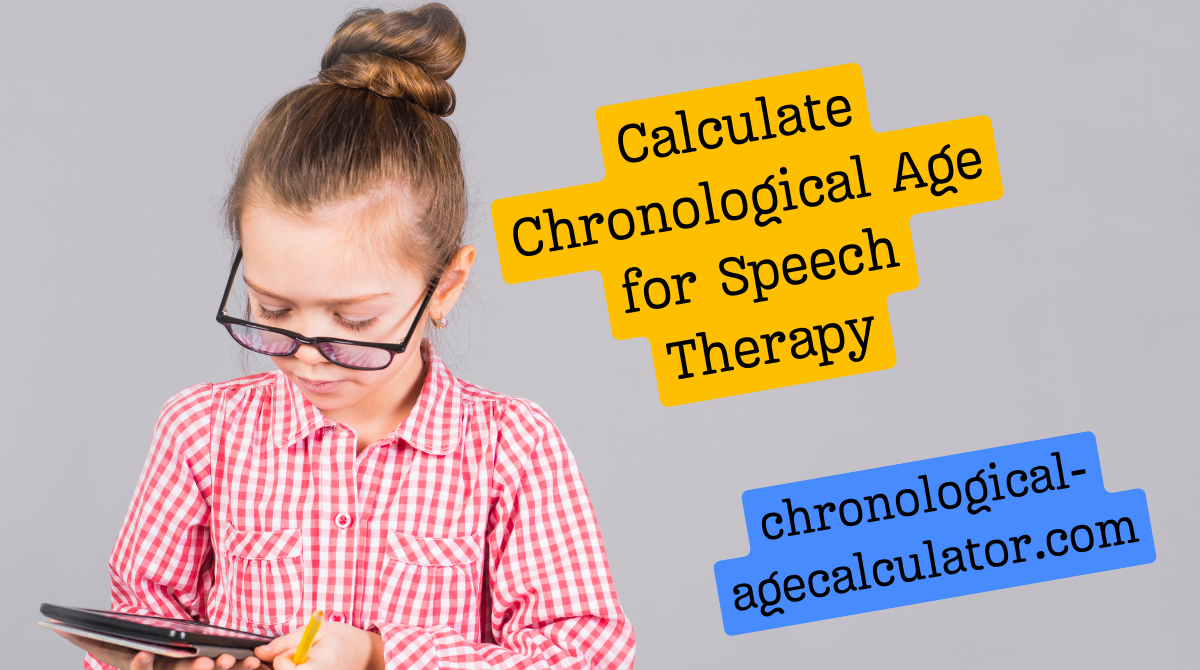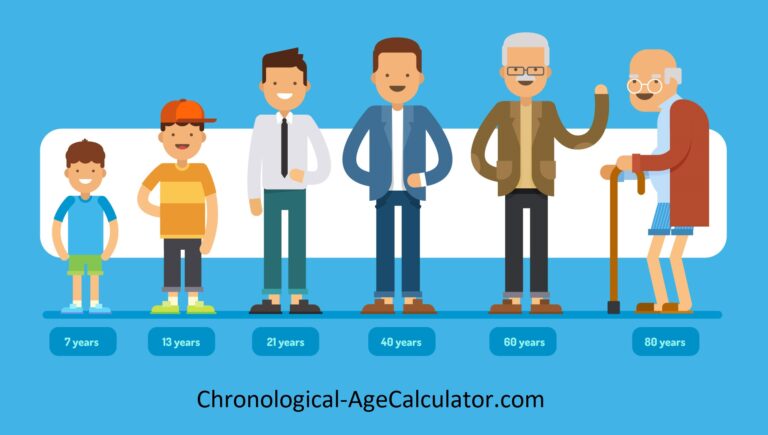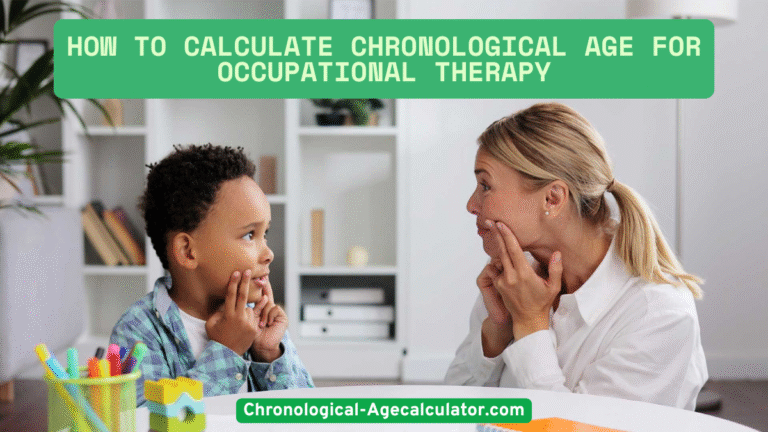How to Calculate Chronological Age for Speech Therapy?
Did you know that a child’s exact age can significantly influence the type of speech therapy they receive? Understanding how to calculate chronological age for speech therapy is essential for parents, teachers, and speech-language pathologists alike. It helps determine when a child should reach certain milestones and whether they may benefit from early intervention.
Let’s explore everything you need to know, from calculating age to understanding milestones and choosing the right therapy approach.
What Is Speech Therapy?
It is a treatment that helps individuals improve their speech, language, and communication skills. It’s often used for children with developmental delays or speech disorders, and for adults recovering from injury or illness. Therapists help with pronunciation, vocabulary, fluency, and even social communication skills.
What Research Is Being Conducted on Developmental Speech and Language Problems?
Researchers are constantly working to better understand developmental speech and language disorders. Studies are focused on genetic influences, brain development, and environmental factors. New tools like AI and brain imaging are also helping identify early markers, allowing for age-appropriate speech therapy interventions to begin sooner and be more personalized.
Why Chronological Age Matters in Speech Therapy
Chronological age is the actual age of a child, calculated from their date of birth. It plays a critical role in determining whether a child’s speech and language development aligns with typical developmental timelines. For example, if a 3-year-old cannot form simple sentences, it might be a sign that intervention is needed.
Knowing the best age for speech therapy helps professionals set realistic goals and assess whether the child is meeting communication milestones at the right time.
Calculate Chronological Age for Speech Therapy (Tools and Apps)
To calculate chronological age:
- Write down the date of birth (DOB).
- Note the current date.
- Subtract DOB from today’s date (year, month, day).
- Adjust for months and days if needed.
Example Table:
| Date of Birth | Current Date | Chronological Age |
|---|---|---|
| March 10, 2020 | June 28, 2025 | 5 years, 3 months, 18 days |
Tools & Apps:
- Online Chronological Age Calculators (like ASHA or therapist websites)
- Mobile apps: AgeCalc, ChronoAge
- Custom Excel Sheets or web-based calculators
These tools ensure accurate age calculations, which are vital for speech assessments.
Speech Therapy Milestones by Age
Understanding age-specific milestones helps identify delays early. Here’s a simplified chart:
| Age | Expected Speech Milestones |
|---|---|
| 1 year | Says “mama,” “dada,” babbling with intent |
| 2 years | 2-word phrases, follows simple instructions |
| 3 years | Asks questions, uses plurals, speech ~75% clear |
| 4 years | Uses full sentences, tells short stories |
| 5+ years | Clear articulation, understands complex instructions |
This is why knowing the chronological age for speech therapy matters. It guides whether a child’s progress is typical or delayed.
Ideal Ages for Starting Speech Therapy
Many parents ask, “What age for speech therapy is ideal?” The short answer: the earlier, the better. Children as young as 18 months can start therapy if there are noticeable delays. The best age for speech therapy depends on the type and severity of the issue, but early intervention leads to better outcomes.
Choose the Therapy Style That Suits You
Therapy isn’t one-size-fits-all. Consider the following approaches:
- Play-based therapy (best for toddlers)
- Articulation therapy (for speech sounds)
- Language intervention activities (for vocabulary and grammar)
- Parent-involved sessions
Matching the approach to your child’s age and needs improves success rates.
Special Case: R Sound Development
One of the most common articulation challenges is the “R” sound. Mastering it usually happens around 6 to 7 years old, but it varies. If a child hasn’t developed the R sound by 8 years, speech therapy is often recommended.
The ideal r sound speech therapy age is between 5 and 8 years, depending on individual speech patterns.
Speech Therapy for Kids and Toddlers: What to Expect
For toddlers and young children, therapy is usually fun and play-driven. It may include
- Naming objects
- Singing songs
- Repeating sounds
- Listening games
Progress depends on consistency, family support, and the chronological age at which therapy starts.
5 Warning Signs Speech Therapy for Your Toddler Is Needed
- No words by 18 months
- Limited eye contact or social interaction
- Difficulty understanding simple instructions
- Trouble combining words into phrases
- Drooling or difficulty chewing/swallowing
If any of these apply to your toddler, it may be time to consult a professional.
What Age Is Too Late for Speech Therapy?
The truth? It’s never too late. While early intervention is ideal, many teens and even adults benefit from therapy. If you’re asking, “What age is best for speech therapy?”, the answer is: the age when the issue is identified. Later doesn’t mean less effective, but the progress just may take more time.
Delayed Speech or Language Development
Speech delay = child is behind in speech but still developing normally otherwise. Language delay = challenges with understanding or using language.
Both require proper age assessment and can benefit greatly from therapy.
Final Verdict
Knowing how to calculate chronological age for speech therapy is essential to identifying whether a child’s development is on track. With this knowledge, you can better navigate therapy options, milestones, and intervention strategies.
Don’t wait. The sooner you act, the better your child’s chances of catching up and thriving.




